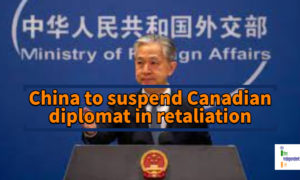
On October 17 Canada will become the first Group of Seven (G7) member and second country in the world after Uruguay to allow the recreational consumption of cannabis.
“After October 17, 2018, passengers will be permitted to have a legal amount of cannabis, which is 30 grams, in either their carry on or checked bag, if they are flying to a domestic destination (i.e. within Canada),” Delphine Denis, spokeswoman for Transport Minister Marc Garneau, told AFP.
Canada’s new #cannabis law comes into effect on October 17, 2018. If you intend to buy cannabis, look for the cannabis symbol and the excise stamp on legal cannabis packaging. Learn more about what will be legal and what will not: https://t.co/fgi0T4NuEG #CannabisInCanada pic.twitter.com/Cm0fRJSmSp
— GovCanHealth (@GovCanHealth) September 28, 2018
However it is still illegal to take pot across international boundaries, such as on trans-border flights, Denis added.
Smoking on-board airplanes also remains illegal.
The authorities are posting signage advising travelers of the rules at airports, ferry and cruise terminals, railway stations, and along highways to the United States.
With Canada set to legalize recreational marijuana on Oct. 17, Canadian cannabis stock prices have soared, giving the Cannabis startup firms enormous amounts of money with which to invest in their business, and this can disrupt the trade in US as well.
With US well on its way to legalize recreational Marijuana, on a nationwide level, One recent estimate suggested the U.S. marijuana market could be worth about US$90 billion in a year. Given the Canadians will be ready with supply and US firms not even ready with logistics there is a lot on the table for Ottawa to win and fly high.







